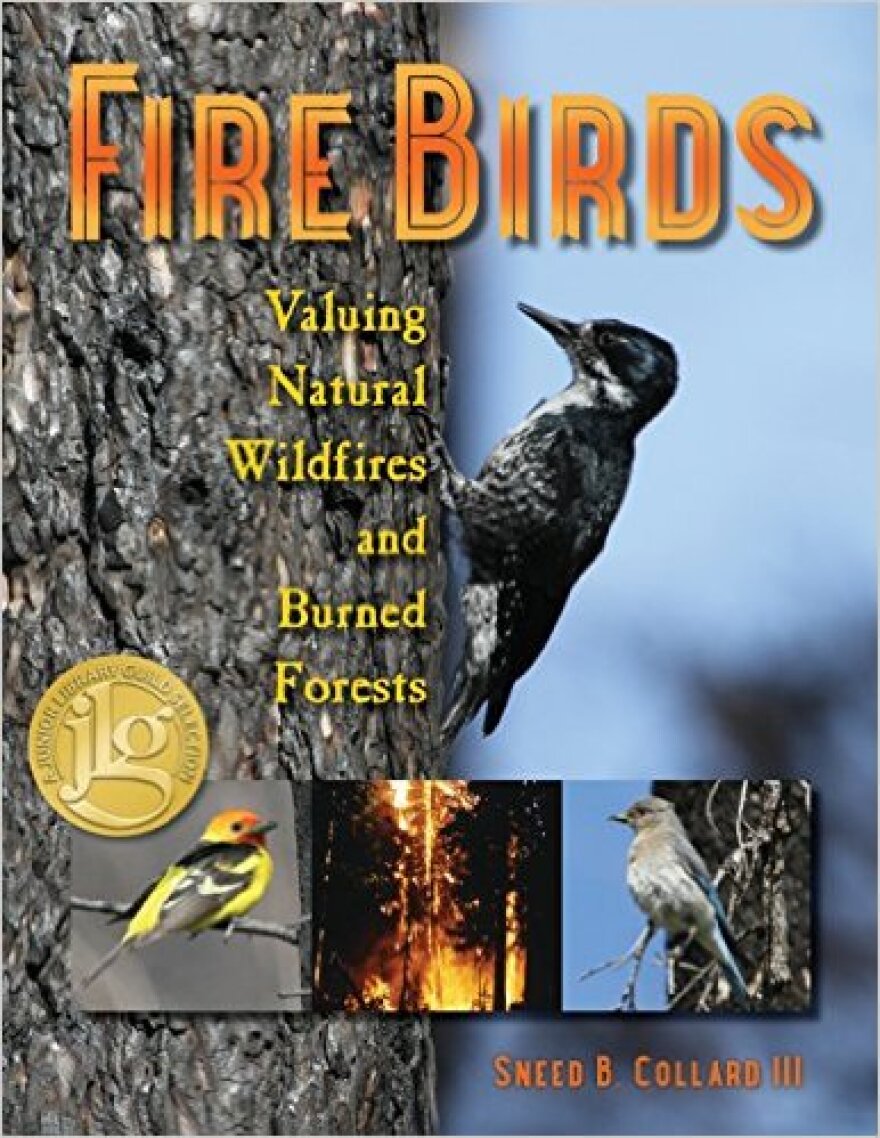Fire Birds: Valuing Natural Wildfires and Burned Forests, by Sneed B. Collard III
Bucking Horse Books, 2015
It's been a hot and smoky summer here in Western Montana and most of us were grateful for the rain that eventually brought an end to our smoke-filled air. Those of us who grew up in the United States from the 1940s to the 1970s will remember the Forest Service's longest-running PSA campaign in history with the mascot of Smoky the Bear and the slogan, “Only you can prevent forest fires!”
The belief, at that time, was that forest fires left nothing but death and devastation in their wake; and while that is still a real danger in populated areas, there are many bird and animal species that benefit from the habitats created by naturally-occurring forest fires.
In Fire Birds, Sneed B. Collard III follows University of Montana Professor Dick Hutto on a path through the Black Mountain burn area near Missoula Montana to learn about his study of over 15 kinds of birds that actually prefer to nest in burned forests.
One of these species is the Black-backed Woodpecker. Forest fires emit radiation that attracts wood-boring beetles, which in turn draw the woodpeckers to the forest. Capable of boring into very hard wood, the woodpeckers create nest holes that are then used by other cavity-nesting birds.
Since many small mammals feed on bird eggs, the lack of such animals after a forest fire makes for particularly hospitable conditions for bird populations to regenerate.
Naturally-caused wildfires also prevent advantages to vegetation. Many shrubs produce seed that only sprouts after exposure to fire; and layers of ash fertilize the soil, which has more direct access to sunlight after large trees have burned down. This stimulates the growth of tree species and other plants that depend more heavily on sunlight, which draws in mammals as well.
One of the dangers to the regenerating ecosystem after a forest fire is salvage logging, since the timber industry is generally focused on removing the largest trees, which make the best habitat for woodpeckers. Salvage logging also tears up the forest floor, creating soil erosion and allowing weeds to flourish.
However some biologists believe that salvage logging can be beneficial to prevent more severe “double or triple-burn” fires in areas where dead trees dry out and re-ignite, which can also damage soil and lead to erosion and debris in streams and lakes.
While admitting that there are no easy answers to the questions of how best to handle the aftermath of a forest fire, Collard concludes his book with an account of the work of wildlife biologist Vicki Saab who is attempting to create scientific models to determine which trees can be logged and which should be left standing after a burn.
The short chapters of Fire Birds are accompanied by Collard's photos of birds and other wildlife in burned habitats and the scientists who study them. Sidebars throughout the book feature different fire bird species with anecdotes about why each prefers a burned habitat, as well as a list of birds found in burn areas more than in any other habitat. The book concludes with a glossary and resource list for additional information about the value of burned forests to wildlife.
On the whole, Fire Birds does a good job of presenting solid evidence of how burned areas are beneficial to diverse wildlife and fairly presents the controversial issues surrounding salvage logging and environmental preservation in the aftermath of a fire. This book would be a good resource for middle grade students, and will be of particular interest in the Pacific Northwest where forest fires are a common occurrence.
The Write Question blog
The Write Question on Facebook
The Write Question on Twitter
The Write Question podcast

Sneed B. Collard III is the author of more than 65 books for young readers. His books have won numerous honors including the Washington Post – Children's Book Guild Nonfiction Award for his body of work.
Sneed B. Collard III lives in Missoula, Montana, and is the founder of Bucking Horse Books.

Renee Vaillancourt McGrath has worked as a writer, editor, librarian, and public radio program host. She lives in Stevensville, Montana, with her husband, two daughters, and two dogs.




